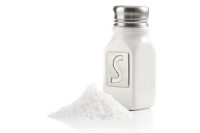Joe Purl, food scientist and culinary chef for Cargill, shares some insights on meat and poultry processors' effort to reduce sodium in their products.
How is sodium reduction meshing with processors’ overall efforts at developing cleaner label products?
Joe Purl : Without a formal definition, “clean label” is an idea that continues to evolve. However, for many consumers, health and wellness considerations play a role in their label concerns. In this regard, sodium reduction is certainly part of the equation. Potassium chloride is often a central player in sodium reduction, offering similar functionality to the salt it replaces. With the recent FDA ruling on using potassium salt as an alternative name for potassium chloride, Cargill is monitoring consumer responses to the health perception and purchase intent of potassium salt over time.
What innovations in sodium reduction ingredients are influencing product development for meat and poultry?
Joe Purl : We’ve found potassium salt can serve as a 1:1 replacement for sodium chloride since it offers similar functionality to salt. With potassium salt, manufacturers can count on maintaining the same great taste, texture and shelf life of their foods, all while reducing the sodium content up to 50%. Deeper salt reductions, up to 50%, are possible in more seasoned products like meat sticks, while more neutral flavor applications, like deli poultry meat, might only allow for a 30% salt reduction. Ultimately, finding the right balance will depend on the application, and our experts can help brands find the right solution for their specific product. While there are no silver bullets when it comes to sodium reduction, solutions like potassium salt can enable significant salt reductions, while still meeting processors’ yield goals and consumers’ taste expectations.
What ingredient best practices should processors keep in mind when crafting a low-sodium product?
Joe Purl : Humidity storage conditions for salt are critical for maintaining good free flowing salt (store <75% RH), and even more important for potassium salt, which has an even higher affinity than granulated salt (store <85% RH). From a product developer perspective, the first step is identifying all the sources of sodium-containing ingredients in a formula (e.g., salt, sodium lactate, etc.) and understanding their functional role in the meat products. If possible, greater success comes from finding partial replacements of all sodium containing ingredients to give a better balance in terms of functionality. Addressing alternatives for all sources leads to a more robust solution from a taste, texture, and consumer acceptability perspective.
What spices/flavorings for cured meats create a better flavor profile in a low sodium product?
Joe Purl : This is very much application dependent; there is no single profile that fits better than others. Salt has such a profound impact on flavor balance such as sweet and salty or the acid and salty balance that based on your application and reduction levels targeted you will likely need a unique seasoning blend to help balance the profile.



